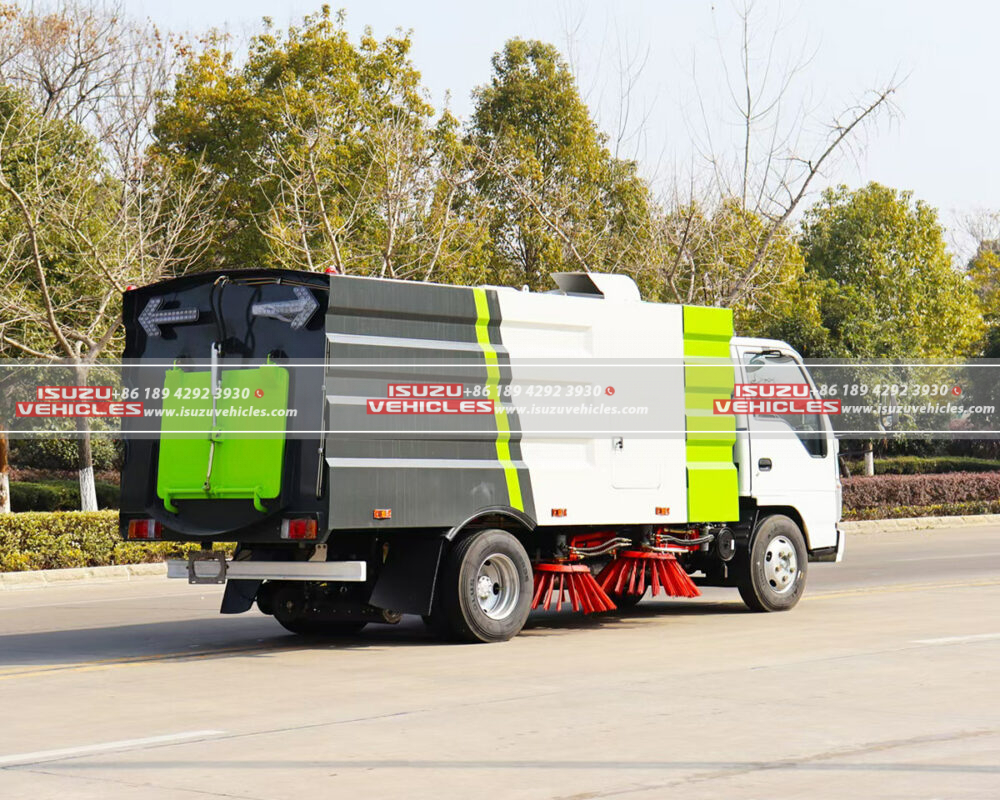Mexico City’s ongoing battle against urban pollution and waste management challenges has entered a new phase with the integration of 20 ISUZU sweeper trucks into its municipal cleaning fleet. These purpose-built vehicles, equipped with advanced mechanical brooms, high-pressure water jets, and HEPA filtration systems, aim to address the metropolis’s chronic air quality issues and particulate matter accumulation. As one of the world’s most densely populated cities, generating over 13,000 tons of daily waste, Mexico City’s investment underscores its commitment to leveraging specialized machinery for sustainable urban maintenance. The deployment aligns with the city’s Clean Air Program 2024 and complements existing ISUZU garbage truck and ISUZU sewer truck operations that manage waste collection and drainage systems.
1. Engineering Precision for Megacity Challenges
The new ISUZU sweeper trucks are tailored to handle Mexico City’s unique urban landscape, where narrow colonial-era streets intersect with sprawling modern thoroughfares. Built on ISUZU’s NPR chassis, these vehicles combine maneuverability with industrial-grade cleaning capabilities:
- Multi-stage sweeping systems: Coarse debris collection via rotating steel brushes, followed by fine particulate capture through suction technology
- 500-liter water tanks enabling continuous 8-hour operation without refilling, critical for high-traffic zones like Paseo de la Reforma
- Real-time air quality sensors that adjust suction power based on particulate matter (PM2.5/PM10) levels
The trucks’ modular design allows quick reconfiguration for specific tasks, such as clearing post-rainfall sludge in flood-prone neighborhoods like Iztapalapa or managing construction debris in Santa Fe’s business district.
2. Targeted Deployment Across Pollution Hotspots
Mexico City’s Environmental Secretariat has prioritized deployment in areas where traditional cleaning methods have proven inadequate:
Historic Center (Centro Histórico)
- Cobblestone streets require gentle yet effective sweeping to preserve UNESCO heritage sites
- Noise-reduced operation (65 dB) complies with strict acoustic regulations near cultural landmarks
Peripheral Municipalities
- Combating tolvanera dust storms in Nezahualcóyotl with 600 m³/hour air filtration
- Tackling illegal dumping in Ecatepec through GPS-tracked route optimization
Major Transport Corridors
- Continuous cleaning along 100 km of the Anillo Periférico ring road during off-peak hours
- Coordinated operations with ISUZU garbage trucks to manage waste from 300+ daily street markets
Early trials in Benito Juárez district show a 40% reduction in respirable dust particles and 25% faster street drying post-rainfall, mitigating slip hazards.
3. Environmental and Health Benefits
The ISUZU sweeper trucks directly address Mexico City’s status as the OECD’s most polluted megacity, where air quality regularly exceeds WHO safety limits by 500%.
Particulate Matter Reduction
- HEPA 14 filters capture 99.97% of particles down to 0.3 microns
- Closed-loop water systems recycle 85% of used water, preventing contaminated runoff
Public Health Impact
- Projected 15% decrease in pediatric asthma emergencies near high-traffic schools
- Elimination of manual street sweeping, reducing worker exposure to hazardous materials
Carbon Footprint Mitigation
- Euro VI-compliant engines cut NOx emissions by 80% compared to retired models
- Regenerative braking systems recover energy during stop-and-go cleaning cycles
These advancements support Mexico City’s goal of achieving WHO air quality standards by 2030 while aligning with UN Sustainable Development Goals 11 (Sustainable Cities) and 3 (Good Health).
4. Fleet Integration and Future Urban Maintenance
The sweeper trucks join a comprehensive ISUZU fleet that forms the backbone of Mexico City’s sanitation infrastructure:
- ISUZU garbage trucks servicing 12,000+ daily collection points across 16 boroughs
- ISUZU sewer trucks maintaining 15,000 km of drainage lines vulnerable to floods
- Hybrid-electric pilot models scheduled for 2025 deployment in pedestrianized zones
The city’s Maintenance and Urban Services Directorate has implemented a smart fleet management platform that integrates real-time data from sweeper, garbage, and sewer trucks. This system enables:
- Predictive maintenance alerts based on engine load and debris composition analytics
- Dynamic route planning to avoid conflicts between cleaning crews and waste collection
- Public transparency through live air quality maps linked to sweeping activities
As Mexico City prepares for projected population growth to 23 million by 2030, the ISUZU sweeper trucks exemplify how targeted mechanization can balance heritage preservation, public health imperatives, and environmental sustainability in one of the world’s most complex urban ecosystems.
